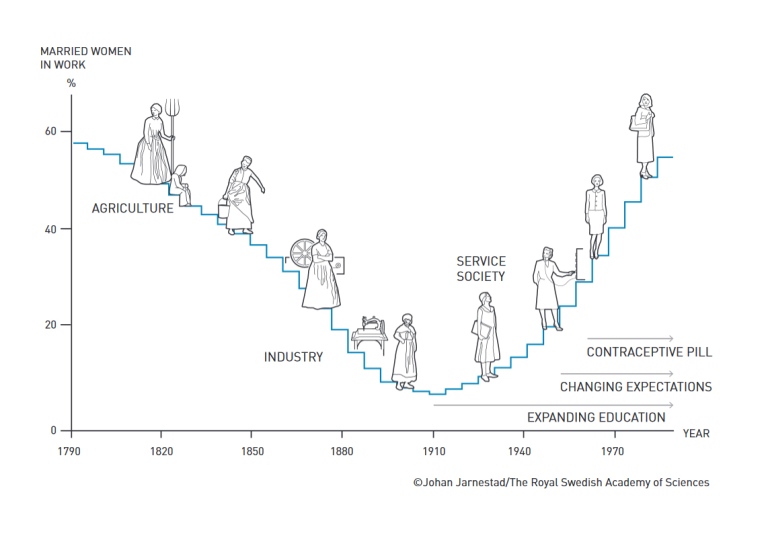Nobel Prize awarded for women’s labour market research
The Nobel Laureate in the Economic Sciences has been awarded to Harvard Professor of Economics, Claudia Goldin, in recognition of her ground-breaking research into women’s labour market outcomes, including the gender pay gap.
The 2023 Nobel Prize in Economic Sciences, formally known as the Sveriges Riksbank Prize in Economic Sciences in Memory of Alfred Nobel, has been awarded to Harvard Professor in Economics Claudia Goldin. Her work is the first to provide a comprehensive and reliable account of women’s earnings and labour market participation, taking a historical lens that started as far back as the late 18th Century.
This award is a significant recognition of the value of economic research that focuses on the experiences and inequities faced by women in the labour market. It is a much-needed step towards legitimising and elevating this important field of study.
Claudia’s research uncovered the parenthood effect, which is also a major contributor to the gender pay gap
Claudia’s research looks back over 200 years of data from the United States to analyse the many dimensions of gender differences in labour market outcomes, as well as the causes of the gender pay gap. Her findings show that, over time, the drivers contributing to the gender pay gap have shifted. One of the key drivers of the increase in women’s participation in the workforce was the introduction of the contraceptive pill, which allowed new opportunities for women to plan their careers before having children.
By replicating some of her research, we can develop a more comprehensive understanding of the unique experiences of working women and mothers in our own country
In providing the award, The Royal Swedish Academy of Sciences noted that unequal treatment in the labour force, which prevents workers from utilising their skills, is a major economic cost to society. Uncovering the causes of the disparities paves the way for creating a more equal workforce and society.
“Understanding women’s role in the labour market is important for society. Thanks to Claudia Goldin’s ground-breaking research we now know much more about the underlying factors and which barriers may need to be addressed in the future” — Jakob Svensson, Chair of the Committee for the Prize in Economic Sciences
Proportion of women in the US labour force

Reducing pay gaps, and better allocating workers to jobs they are more suited for, could lead to significant increases in GDP
Work that meets the needs of women and their families is work that benefits everyone. The Equal Pay Act was introduced in Aotearoa New Zealand more than 50 years ago. However, while progress has been made, we have still not eliminated the pay gap. The gender pay gap in New Zealand, for median hourly earnings, compares the pay of all women in the workforce to that of Pākehā men and currently sits at 8.6 percent.
Aotearoa New Zealand also has a prevalent gender pay gap within ethnicities — meaning the pay gap that exists between Māori women and Māori men, Pacific women and Pacific men, and between Pākehā women and Pākehā men. New Zealand’s gender pay gap, for median hourly earnings, within ethnicities for the year ended June 2023, by ethnic group is:
- Pākehā: 7.9 percent
- Māori: 5.7 percent
- Pacific: 2.7 percent
- Asian: 7.9 percent
- MELAA: 24 percent.